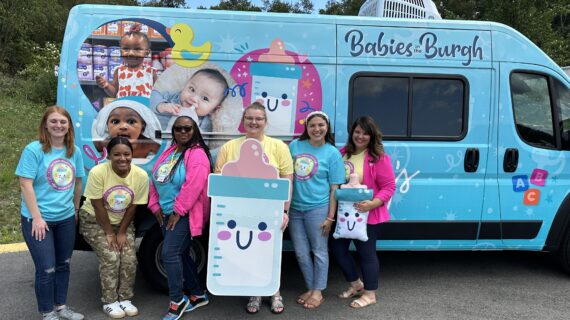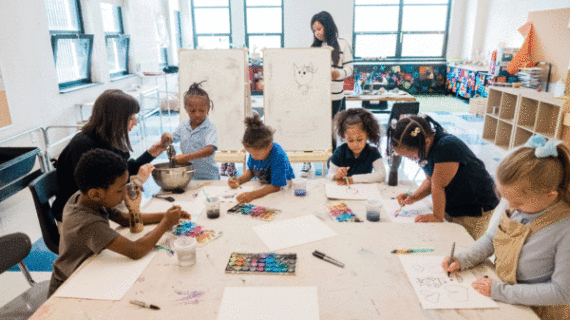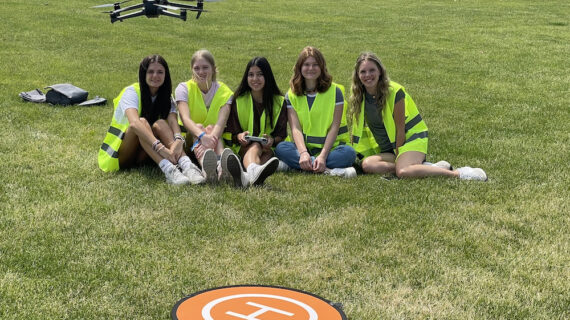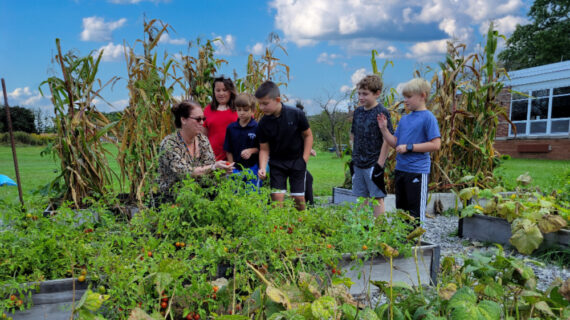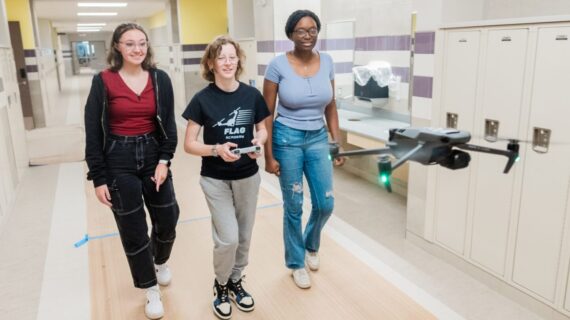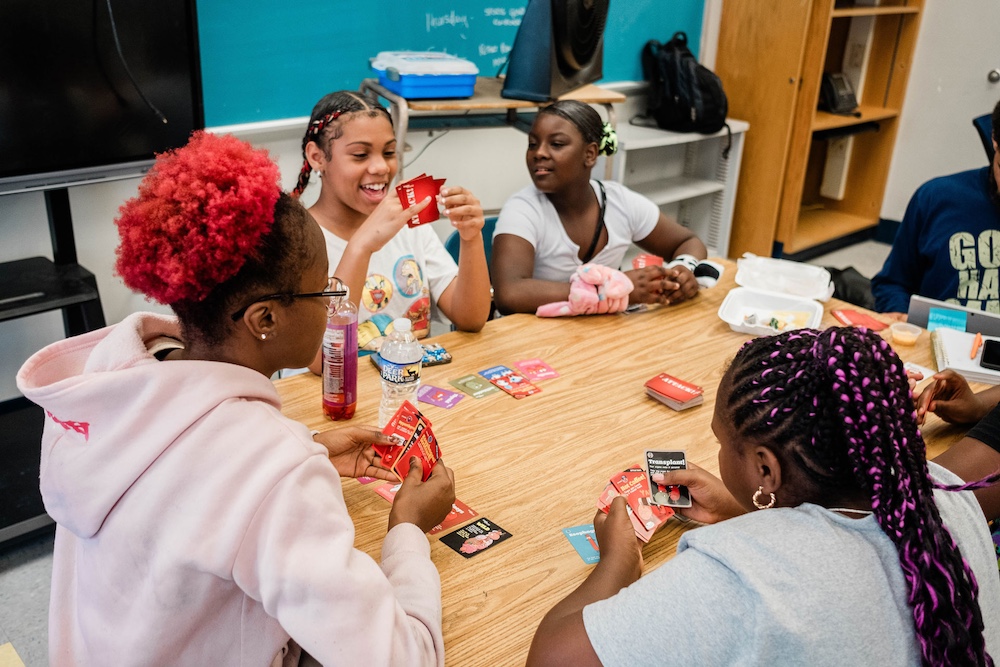
At Village Games+, students are building games and forging paths to careers in STEAM
Walter Lewis could see how creativity and curiosity blossomed when kids were introduced to game design at Homewood Children’s Village (HCV). But the nonprofit’s president also knew that the approach HCV had taken in the past — offering a six-week course in digital game creation using modular programming tools like Scratch — was only the beginning.
Six weeks isn’t really enough time for a student to grasp the principles of game design and then create a game of their own. That sparked an idea. What if HCV could launch an in-house game design studio where young people had the time and resources to invent games, then build and even sell them, while learning art, science and entrepreneurship along the way?
Lewis sat down with Benjamin Walker, HCV’s middle school program manager, to brainstorm. Walker instantly saw the possibilities. But he told his boss that in order to design a really impactful learning experience, he needed to do some learning of his own.
Nearly two decades working in education and youth development have taught Walker a lot about kids and teens, but he wanted to dive deeply into the game industry itself. What does the business of designing digital and analog games really look like? What kind of skills and career paths does it include?
“The industry is very wide and broad and deep, with a lot of different areas that are low-hanging fruit for young people to get involved in,” Walker says. “It’s a really great industry for learning how to interact with the world in ways that are complex and simple at the same time.”
Along with reading articles and listening online to keynote speeches about the game industry, Walker talked with experts from Pittsburgh’s game design community. He asked them: How might HCV get our project off the ground?
“You know what they said? There’s no magic to it. You’ve just got to do it. You got to make a game,” Walker says. “That’s how you get into the industry.”
That’s how Village Games+ was born.

COOPERATIVE PLAYING AND LEARNING
Throughout 2024, that’s just what HCV students have been doing. Fueled by a Moonshot Grant from Remake Learning, and in collaboration with folks at Carnegie Mellon University’s Entertainment Technology Center and the University of Pittsburgh’s Digital Narrative and Interactive Design program, Walker’s students are busy designing and building early literacy games for grades K through 4.
One game, a vocabulary-building board game called Letter Jam, is already reaching the “play testing” stage. It grew out of work done last spring by three teams of Homewood-area high schoolers.
In the game, players travel around the Letter Jam board, gaining or losing letters as they land on different spaces and draw various cards. The winner is the first person to build five words from letters gathered while playing.
As his students brainstormed this idea, Walker gave them creative freedom but asked valuable questions: Do you think kids between ages 5 and 10 will be excited about building words? Might they be nervous about spelling words in front of their peers?
Those questions and others, Walker says, led to a discussion about Letter Jam’s potential rules: “They said, ‘Oh, what if we help each other with words? If I see you have these letters and I have these letters, what if we try to trade a letter so that they can make the word cooperatively?”
To make things more compelling, the group decided that players would work together against a common foe.
In the colorful and cooperative world of Letter Jam’s “candy universe,” players are united in battling things that can happen when you have too much candy. They might encounter a tummy ache, tooth decay or a sugar rush — or be chased by a giant piece of candy — and together they can build words that will neutralize these sugary foes.
The premise keeps K-4 learners engaged while teaching them how letters can build increasingly complex words.
LITERACY LEARNING AND POWERFUL ‘PLAY TESTING’
Things are moving along even more quickly than expected. Last spring, the Village Games+ high schoolers were asked to think through their ideas and gather some visual inspiration from the internet for a presentation. They planned to launch a prototype later in the year.
Their excitement accelerated that timeline. Inspired by their ideas and hungry to see how elementary schoolers would react, they decided to sketch out a game board and construct playing pieces out of paper.
“They started playing and I just sat back,” Walker says.
Rather than tell the young game designers that they were ahead of schedule, “I scrapped my plan and just watched it take place,” he says. “It was like, ‘Wow, this is amazing.’”
This creative flexibility and capacity to leap forward is what Moonshots Grants are all about. And as interactions with game experts at CMU and Pitt add further inspiration, Walker and his students are learning and progressing on this journey together.
Letter Jam took another step forward this summer, as the students gathered with the HCV team for creative sessions at Homewood’s Westinghouse Academy. They developed the game’s characters and their foes, drawing pictures and mapping out the details of the board and the cards that players will choose.
By the final week of summer camp, a young student named Sade was carefully sketching characters to decorate the game board, including a frozen dragon made of ice cream named Ice-O and a stampeding horse made out of birthday cake named Muncho.
As one student worked on a character called Licorice Wish, another student was sketching out the game’s Candy Corn Unicorn— both creatively playing with language while developing Letter Jam’s fictional world.
This fall, the team will digitally render the designs for Letter Jam so that they can manufacture a more durable board and pieces for further testing. They will also continue developing the other two games — one a memory game using homophones, the other a word-building game that is “a little more Uno-esque” than Letter Jam, Walker says.
And soon, it will be time to think about marketing and sales.
“We went from design to development to prototyping to actual game play,” he says. “From there, we start looking at the business side of it — what do we need to do?”
As they have since the project started, Walker says, the adults will be learning alongside the students and helping them to build vital STEAM and entrepreneurial skills, while challenging the limiting notions of who typically designs games, accesses STEAM learning, and builds successful STEAM careers.


